Bhiwadi/Dehradun: For most of her 68 years, Pramila Kumar lived for others—husband, children, students, grandchildren. She cooked, cared, and carried the weight of family duty. Then one day, she asked herself: When am I going to live for myself? Ten months ago, she moved to a retirement community in Bhiwadi, Rajasthan. Now she swims, plays billiards, and takes long drives, answering to no one.
A retired high school chemistry teacher, Kumar has restarted her life with renewed energy ever since she rented her apartment in Bhiwadi, an industrial town now finding its own second life as a retirement hub in Delhi-NCR. Two senior living projects are already up and running here, with a third on the way.
“Before coming here, I was busy raising my grandkids, cooking in the kitchen. Now I am living my life the way I want to, on my own terms,” Kumar said, tucking into a healthy meal of dal, rice, and sabzi at the spacious canteen of Ashiana Nirmay, the senior living property where she has rented a flat for around Rs 18,000 per month. It’s manicured and multi-storeyed like many other upscale societies in NCR, but also comes with mobility access and medical care on call.
Until about a decade ago, seniors in India could either live with family or brave their twilight years alone. Now, a third option is booming— independent senior living communities. In cities that revolve around the needs of the young, these spaces—developed by companies like Ashiana Housing, Antara Senior Care, and Columbia Pacific Communities— are an oasis for seniors.
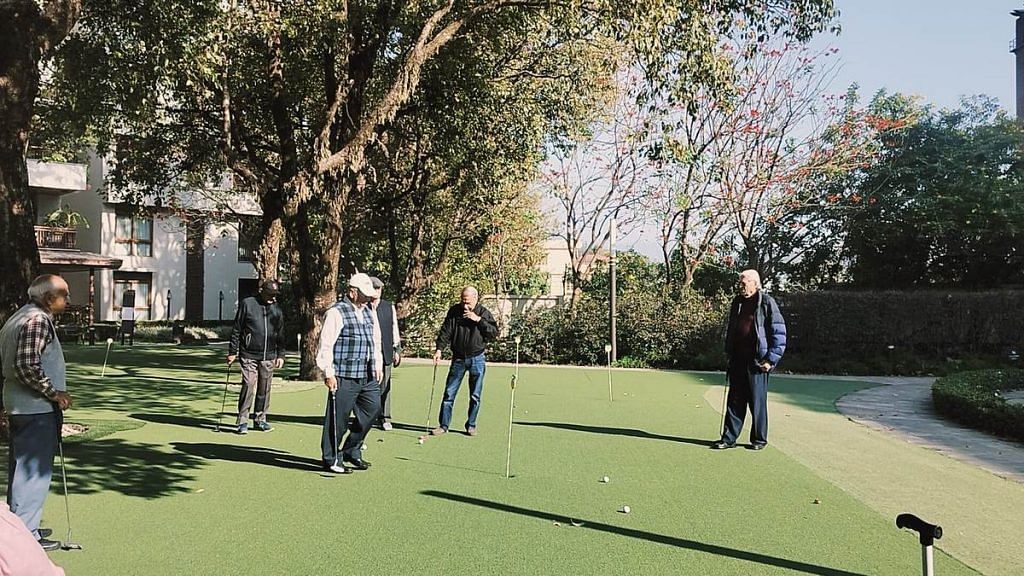
The real estate sector is cashing in on India’s rapidly greying market, offering homes designed for comfort, convenience, and connection. They’re built on the idea that seniors still have desires, drive, and a zest for life. Rather than being treated like supporting characters post-retirement, they get an outlet for their main character energy. The minimum age for most of these communities is 55 and no one is ‘too old’.
“I just didn’t like feeling like an uncle. And here I don’t! Everyone is the same age!” said 80-year-old Ramesh Malhotra while playing carrom on a slow Monday afternoon at Ashiana Nirmay.
Southern cities such as Bengaluru, Chennai, Kochi, and Coimbatore dominate the senior housing market with a 60 per cent share. But Pune, Dehradun, Noida, Gurugram, and the more affordable Bhiwadi—only about 67 km from Delhi—are catching up. According to a report by global real estate company JLL, the senior housing market is expected to grow 300 per cent by 2030, reaching a staggering $7.7 billion.
There was a little girl bubbling inside me all this time. And I wanted to live life on my terms. It is very nice to stay with the children, but they have their own busy lives
-Pramila Kumar, resident of Ashiana Nirmay
Most retirement properties in India are priced under Rs 45 lakh, according to a 2022 Housing Research report, but luxury options in the Rs 1-2 crore range are also growing. From 3BHK apartments to villas with resort-style amenities, the market is catering to seniors who want a lavish, independent post-retirement life. Ownership and rental models are both available.
But with India’s elderly population set to double by 2050, demand is overtaking supply.
“The demand for retirement homes is estimated at 3-4 lakh units, but only 20,000-25,000 units are currently available, with another 5,000-10,000 under construction. The gap is massive,” said Rajagopal G, CEO of Serene Communities by Columbia Pacific and a board member of the Association of Senior Living India (ASLI). “In the next 10-20 years, 10-15 crore seniors will be added to India’s population. We need more players to enter the market to meet this demand.”
Independent senior living residences are geared toward those who don’t require constant care and have built enough financial security to choose their own lifestyle.
Also Read: India’s silver economy is booming—app, startups, part-time ‘daughters’, dementia centres
US to renewal in Bhiwadi
Pramila Kumar picks up a billiards cue stick and deftly rubs its tip before taking aim. She leans over the table, pulls back the cue, and strikes. The ball goes into the pocket as her team rejoices.
Along with four other women, Kumar is part of the women’s billiards team at Ashiana Nirmay. Built in 2017, the 16-acre complex looks from afar like any residential society, complete with tennis and basketball courts, balconies with drying clothes, and a club room. But this ‘active senior living’ space has more than meets the eye. There’s a community kitchen where residents eat together, a club house with dedicated rooms to play cards, billiards, and carrom, as well as a quiet poolside spot to sit and read. It also houses a clinic and hospice to provide immediate or extended care whenever the residents require it.
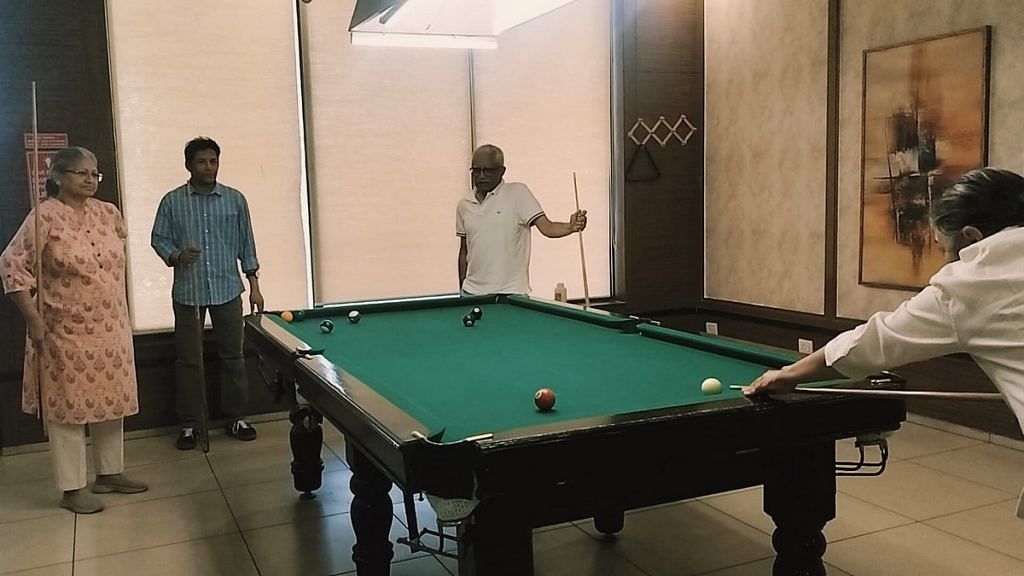
Since moving here, Pramila’s daily routine has drastically changed. Earlier, she used to wake up, go for a walk, return home, and help her daughter in the kitchen. Followed by hours of watching TV, talking to friends on the phone, and yet more cooking. Before that, she had devoted decades to raising her children.
“My husband was a chief engineer in the navy, and I got to travel the world with him. But I lost him when I was 45. I couldn’t even cry then because it was on me to give strength to my children,” Kumar recalled. Her children went on to excel in their fields, eventually settling in the US, where she lived with them for 15 years after retirement. But as her grandson started going to school, she found herself with more empty time than she wanted.
We want our residents to have independent lives for longer. So we have grab rails, chamfered edges, anti-skid tiles, night lamps next to the bed. Switches are placed so residents don’t have to (bend down) and depend on anyone for extra needs
-Ankur Gupta, joint managing director of Ashiana Housing Ltd
“There was a little girl bubbling inside me all this time. And I wanted to live life on my terms. It is very nice to stay with the children, but they have their own busy lives,” she said.
Kumar spent about a year pondering her options before deciding to finally “cut the umbilical cord” and move to Bhiwadi. She now lives in a functional, minimally decorated 1BHK apartment. She rarely uses the kitchen, preferring the convenience of Ashiana’s canteen where a meal comes for about Rs 100.
Though she adored her role as grandparent, she’s reclaiming her independence now. She hits the gym regularly, the results visible in her toned arms. She goes swimming and teaches her neighbours to swim, and spends leisurely afternoons at the billiards table.
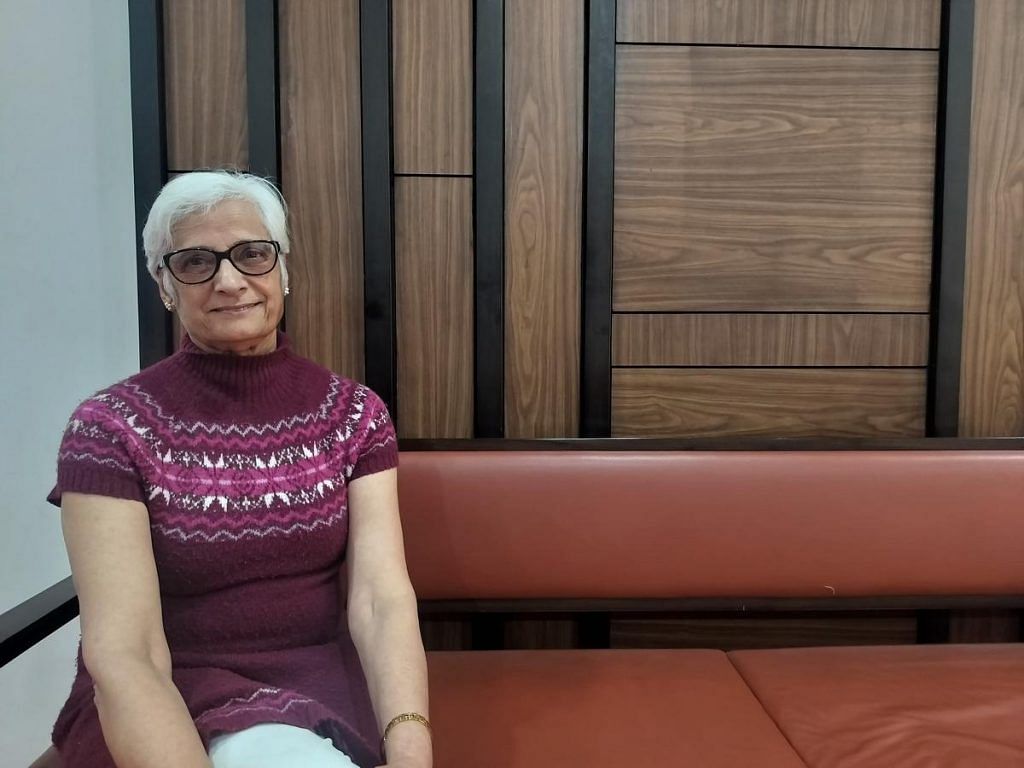
At the property’s canteen, her friend Sanjeev Luthra usually joins her for lunch, coffee, and a chat.
“This, this is my favourite part,” she said, holding up a spoonful of rice. “No kitchen work!”
Ashiana’s foray into senior housing was somewhat accidental. In the 1990s, the real estate development company invested in Bhiwadi anticipating its growth as an industrial hub. But when industrial expansion slowed in the early 2000s, seniors began investing heavily here, said Ashiana joint managing director Ankur Gupta. At the time, his father, the late Om Prakash Gupta, was helming the company.
“My father had already travelled extensively in the United States and seen senior living spaces. He decided to replicate that model here, and so independent ‘active’ living was born,” Ankur Gupta told ThePrint in his office in Delhi.
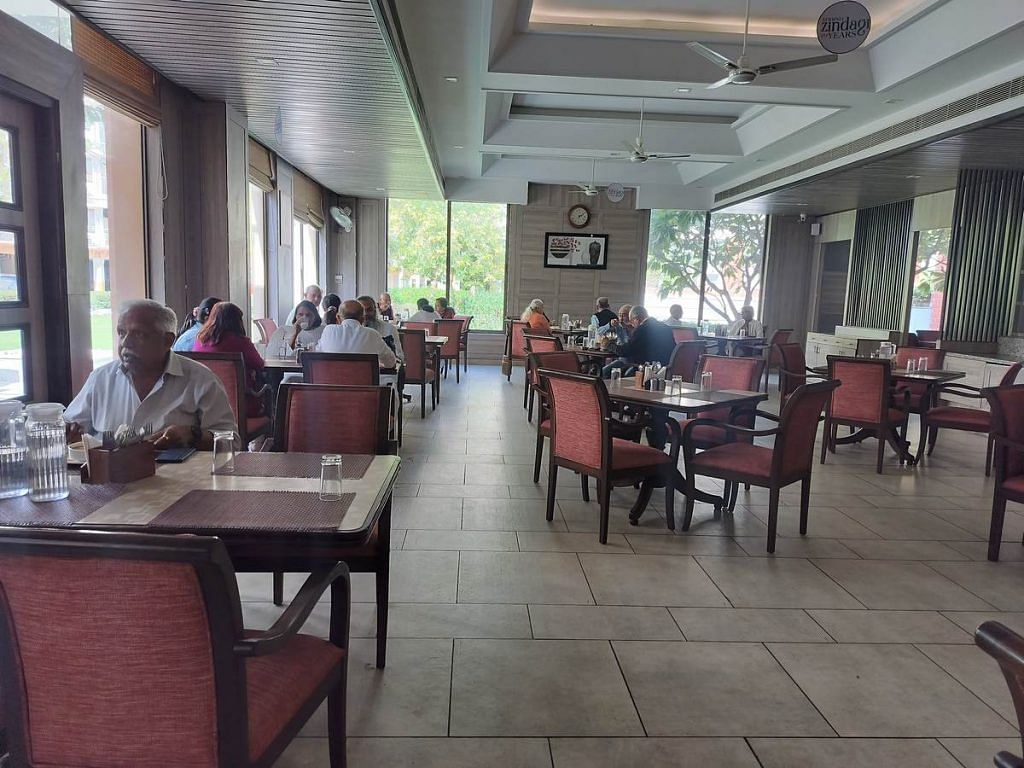
Ashiana currently runs nine independent senior living projects in Lavasa, Pune, Jaipur, and Delhi-NCR. All properties have wellness centres that provide immediate medical attention and where doctors visit for OPD consultations. The wellness centre includes an assisted living space for residents who require more day-to-day support. Residents of the active senior living spaces can also check in here if they temporarily require more care.
Independent senior living residences are geared toward those who don’t require constant care and have built enough financial security to choose their own lifestyle, leaving responsibilities behind to focus finally on themselves.
There’s both a familiar routine and exciting variety to life, with indoor games, monthly parties, festivals, and music and dance classes. And new friendships to nurture without jobs and everyday chores getting in the way.
Kumar has found a best friend in Luthra. They don’t just eat lunch together, but play billiards, watch movies, and discover new interests. For Luthra, it’s karaoke, where he sings freely into the mic whenever singing nights are organised. His go-to songs are ’50s and ’60s Bollywood classics, with Kishore Kumar and Mohd Rafi among his favourites.
“I never thought I would sing so freely and passionately into the mic. But I get to do that here,” Luthra said.
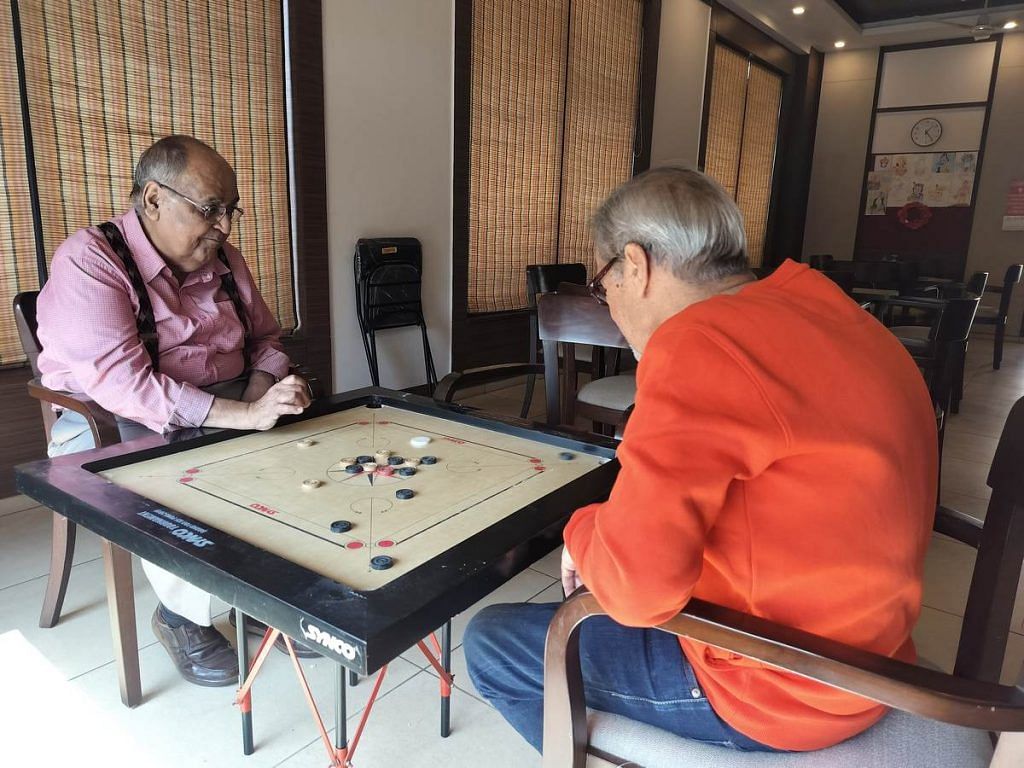
Accessible design, with a few stumbles
Senior living projects don’t radically overhaul their landscape to suit older residents, but they tweak the details—small adjustments that make all the difference. At Ashiana, apartments come with anti-skid tiles as well as support bars in bathrooms and near lifts and staircases.
“As long as we can help it, we want our residents to have independent lives for longer,” said Gupta. “So we have grab rails, chamfered edges, anti-skid tiles, night lamps next to the bed. Switches are placed so residents don’t have to (bend down) and depend on anyone for extra needs.”
Beyond accessibility in individual apartments, Ashiana divides common spaces into private, semi-private, and public zones to facilitate different degrees of social interaction.
“We have reading areas, say next to a fountain, then we have an amphitheatre for residents to get together, and a public area for up to 300-400 people,” Gupta added.
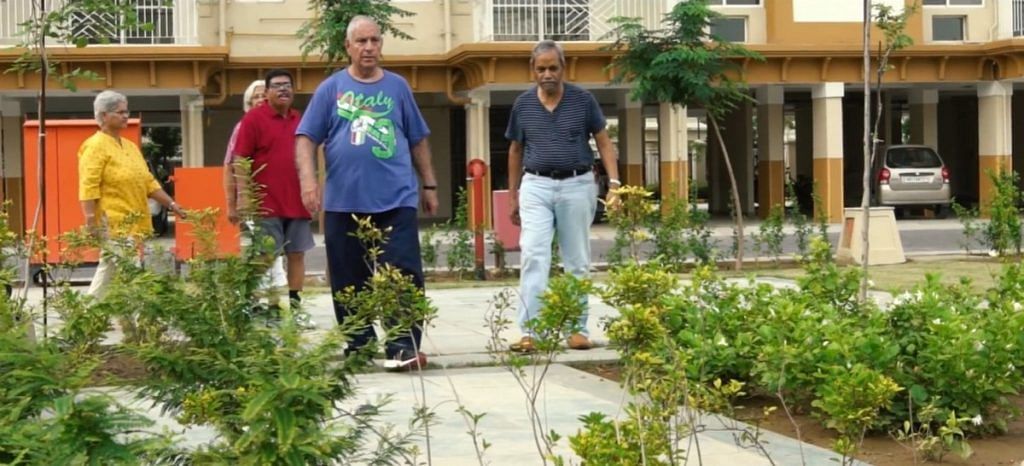
All of these features add comfort, but they don’t solve everything. Kumar loves her evening strolls and morning swims, but the bad quality of air in Bhiwadi gets to her, causing irritability in the eyes and sometimes shortness of breath. The distance to medical care is another worry—the nearest super-speciality hospital is 45 kilometres away, a concern shared by many residents.
At Antara Senior Living in Dehradun, the design took cues from senior communities abroad. Vice chairperson Tara Singh Vachani visited similar projects in Hong Kong before launching Antara.
“We modelled Antara on various senior living projects in the US, UK, and other countries and enlisted architecture firms like Perkins Eastman who are renowned for making senior living projects,” said Rajit Mehta, CEO and managing director of Antara Senior Living. “We kept in mind the various infrastructural needs of a senior living space like materials used, antiskid tiles, grab bars etc.”
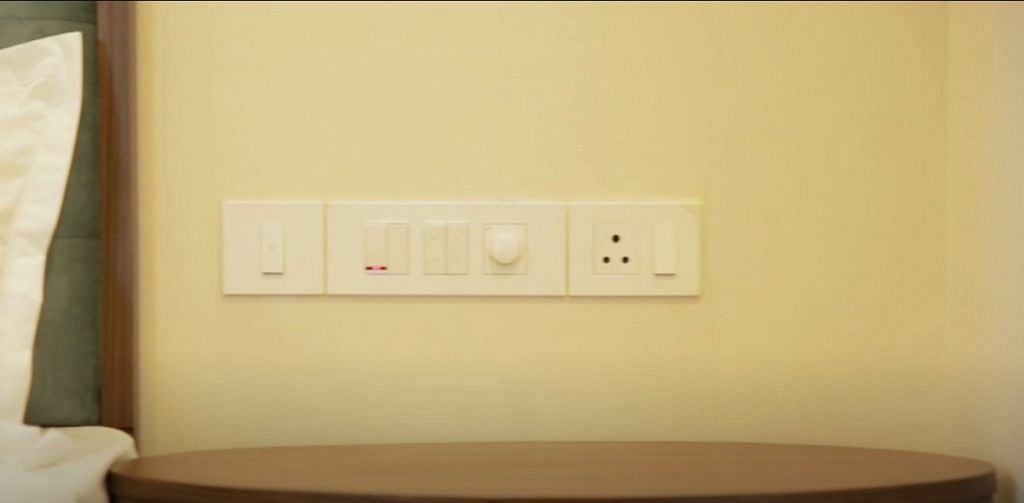
Both Ashiana and Antara build medical infrastructure and security into their designs. On-site clinics with doctors and nurses provide quick medical help, and emergency buttons are installed in every room. At Ashiana, one bathroom in every flat has a window that residents are advised to keep unlocked in case staff ever need to enter during an emergency.
However, while Antara’s 14-acre Dehradun property is well-connected through e-karts that seniors can summon to get around, some residents have raised concerns about the walkways. The concrete paths have slight elevations, and while seniors can be seen walking, jogging, even running along them in the morning, they empty out at night.
“I have had falls here myself, the tiles are anti-skid, but not fully slip-proof,” said Antara resident Sunil Nehru.
While Ashiana looks like a typical upscale apartment complex, Antara has the feel of a five-star resort.
Luxury retirement living
Anita Maitra’s bungalow in Delhi’s posh Vasant Vihar had once been full of life—the laughter of children, dance parties, soirees, the click-click of the paws of the dogs they had adopted over the years. Every corner of the house had been carefully chosen, decorated, and lived in.
Then, the Covid-19 pandemic arrived. The grand five-bedroom house grew silent. The garden became too much for 68-year-old Maitra to take care of alone. Security worries kept her up at night. Her husband’s Parkinson’s was worsening, and the couple needed someone to take care of them now. The house that had once been Anita’s pride now seemed like a burden.
“At night, I used to lie in bed and think—these are the only hours I get to myself. The rest of it is just working, working, working,” she said.
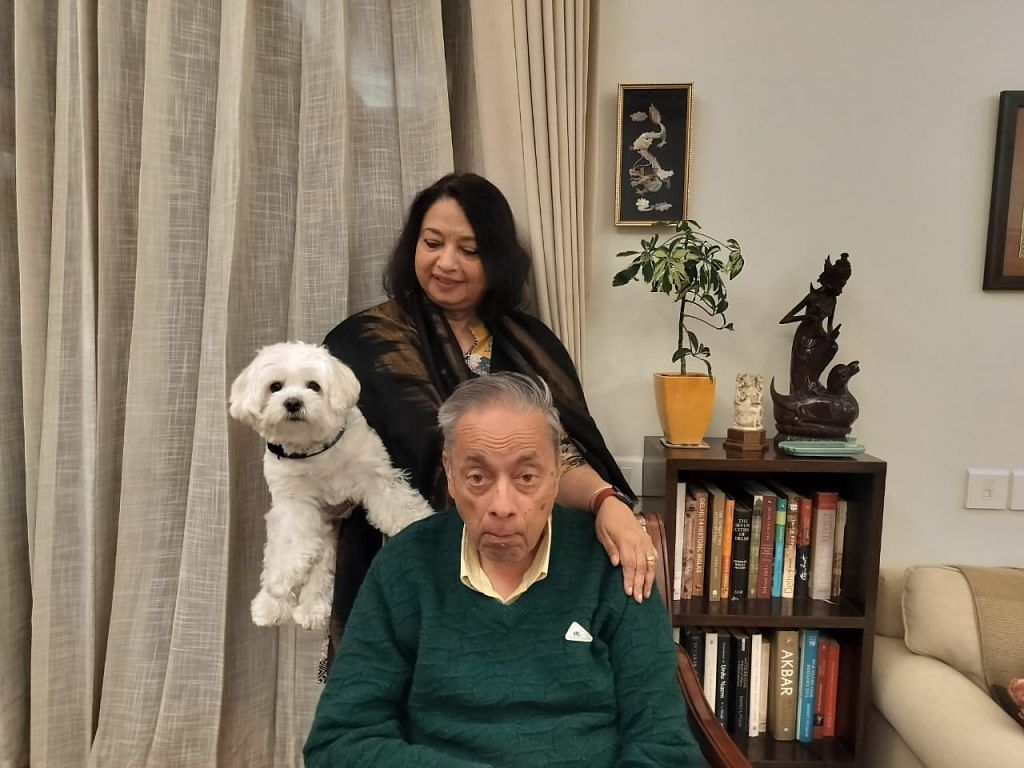
And then, an ad popped up on her Facebook feed. Antara Senior Living. The algorithm had practically read her mind. She quickly booked a visit to Dehradun.
Leaving behind a house built brick by brick wasn’t easy, but when Maitra arrived at Antara, she saw something irresistible—ease of living within reach. She spent two days observing life at the community, the staff, the kitchen, the bonhomie among residents. By the time she left, she was convinced. This is where she wanted to spend the rest of her days. Now, she lives in a 3BHK apartment with a terrace garden, decorated with carefully chosen furniture, family photos, and paintings.
I had donated so many clothes before coming here, thinking where would we even go in a senior living space? I had a whole collection of designer sarees! And here, there’s a party every day. I had to remake my wardrobe
-Anita Maitra. Antara resident
A few notches more lavish than Ashiana apartment complexes, Antara is luxury retirement living—a resort-style community for the ultra-rich in the lap of the Himalayas. The constantly smiling staff, dressed in crisp khaki uniforms, cater to every need, from morning coffee to escorting residents for medical checkups. About 250 staff members take care of just 180 residents.
“We have an in-house training programme for all staff members, which puts special focus on geriatric care to cater to residents,” CEO Mehta said.
Here, luxury is woven into the infrastructure. There is a heated swimming pool for aqua aerobics, a yoga centre, a gym, dedicated rooms for cards and billiards, and a well-stocked library. While Ashiana looks like a typical upscale apartment complex, Antara has the feel of a five-star resort. Plush sofas line the common areas where residents sit and chat and the cafe offers an elaborate menu, with options ranging from Indian thalis to pasta and avocado sandwiches.
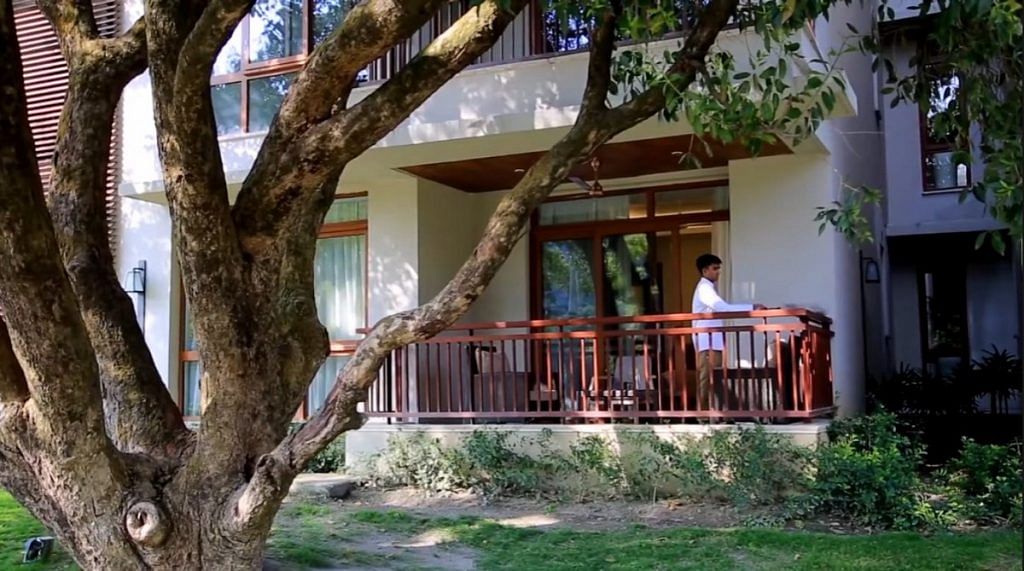
Maitra has a chockablock social calendar now—brunches, cocktail nights thrown by residents, even the occasional play. At first, it was a bit of a shock to her but four years later, she has happily immersed herself in the culture.
“I had donated so many clothes before coming here, thinking where would we even go in a senior living space? I had a whole collection of designer sarees! And here, there’s a party every day. I had to remake my wardrobe,” she said.
“I found myself buying dinner sets, buying clothes, hosting parties, because even though I had not thought of it this way: this is home, after all.”
She has also found a passion for art here through special classes. In the afternoons, she sketches in charcoal and pencil, especially horses, finessing them class after class. She displays her art on her walls, showing them off as her poodle, Kimchi, dances around her. In the afternoons, an aerobics instructor visits her home for one-on-one sessions, guiding her through push-ups and planks.
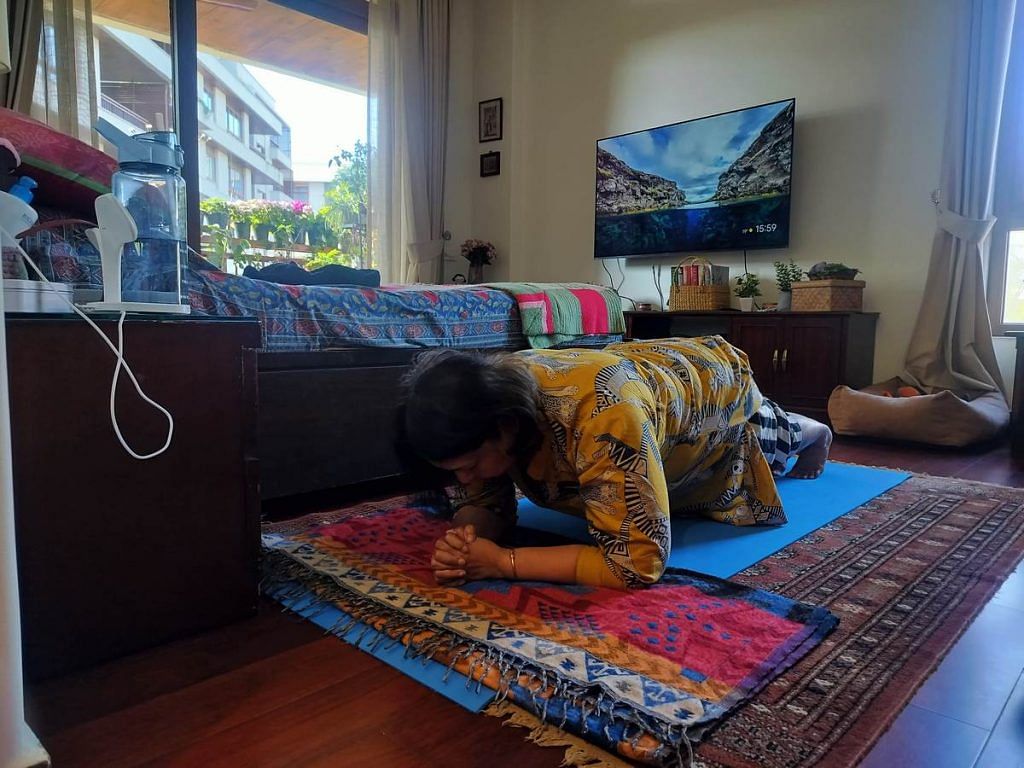
Her husband spends his evenings at the dining table, responding to emails and messages. Their life, once anchored in Delhi, is finding a new rhythm in Dehradun.
From their balcony, they watch their neighbours putting for gold in the park. Often among this set is Dipankar Sanyal, a religious golf player, a former career corporate executive.
“Here, my idle time is measured. This is how you stay active. I only have an hour or two in my day where I have nothing to do. Otherwise, from 5 am to 10-11 pm, I am doing something or the other,” Sanyal said.
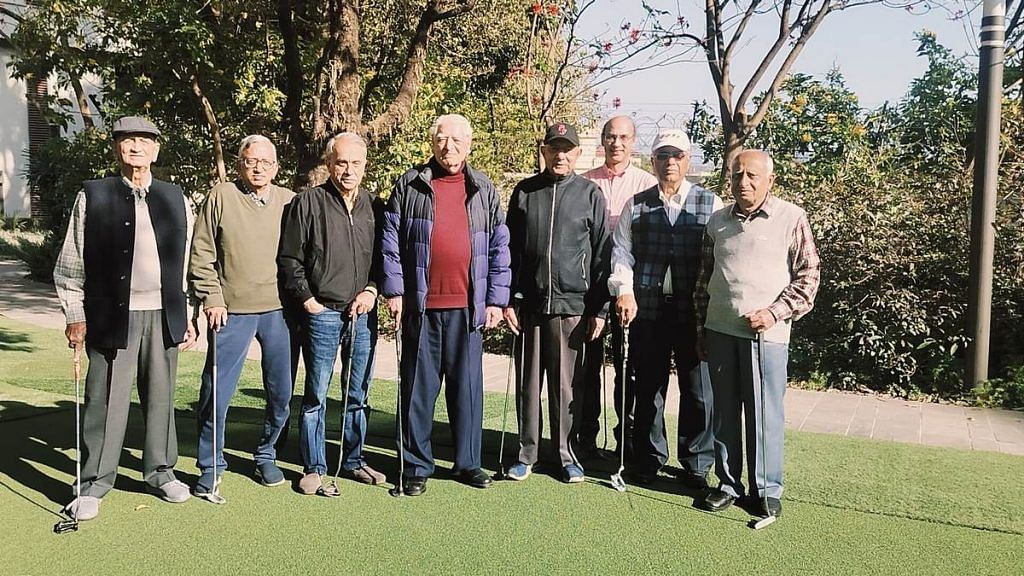
The men walk from hole to hole, practicing their shots, teasing each other over missed putts. It isn’t all that different from a group of boys playing gully cricket. Just slightly posher.
Housekeeping is handled by Antara’s staff, who are just a phone call away. Residents don’t worry about cooking or cleaning. Meals are readily available in the cafe for those who don’t want to prepare their own food. Everything is baked, maida-free, and designed for health-conscious seniors.
Also Read: What brings joy to India’s elderly? There’s more to them than RWA, bhajans, ashrams
‘Heaven before death’
For all the comfort and amenities, senior living spaces in India still carry a stigma. Many see them as a “hospice” where abandoned parents are sent to fade away.
Kumar’s children were unhappy when she first sprung the decision on them. But 10 months later, after visiting her in Bhiwadi, they are fully on board. It was a similar story for Maitra.
“My daughter fought with me a lot. Refused to speak to me for months. She said, ‘We are here, with you, why are you taking this decision?’ Even the marketing executive at Antara told me he didn’t think I would buy the flat because my daughter was simply against it,” she said.
But her family isn’t far from Maitra. Her house is filled with family photos from vacations and weddings. Her granddaughter’s drawings are displayed in every room. She continues to cook religiously in her well-fitted kitchen, preferring her own food over the community’s cafe. Friends and family visit often, staying at Antara’s guest facilities. Her daughter has also warmed up to the idea, often telling Maitra that moving here is the best decision she ever took.
As she walks through the property, proudly pointing out the card room, the café, the bar, the wellness centre, and gym, neighbours greet her along the way, inviting her to join them.

More than leaving Delhi, the biggest challenge for her was changing doctors.
But Antara residents helped with that too, accompanying the Maitras on visits to the hospital.
“I am more of an introvert. I spend a lot of time just drawing, painting, and taking care of my husband. But here I still have such good friends and a thriving sense of community,” she said.
Living here, she’s come out of her shell.
“I write poems and participate in poetry recitations. I can’t sing to save my life but I sing karaoke in public. I participate in everything,” she added.
One of her poems is a philosophical reflection on leaves changing through the seasons, from “glistening green” in spring to “shrivelled” in winter. But it ends on an upbeat note:
I am mesmerised
By their merry dance
Whirling wildly
On my driveway,
In gleeful frenzy
To drift away
On their onward journey?
I imagine them
Traversing over unknown places
Intrepid, uncaring….
Meanwhile, her husband’s access to care for Parkinson’s is better than before. Physiotherapy is available on-site, and staff are always at hand when needed.
On a Wednesday evening, Maitra hurried to attend a play: Tere Naam by Kusum Ansal and Rinku Singh. It was staged in a dedicated room at Antara, where residents lounged on recliners or pulled up plastic chairs to watch. The production, a Zoom conversation between two long lost friends, explored the pain and suffering in their lives. One woman is divorced, and the other’s child has a chronic disease. Maitra sat on the edge of her seat, engrossed. “They got the pulse of the pain,” she remarked later.
Whenever we return to Antara and the gates close behind us, we take a sigh of relief—we finally leave India behind
-Neena Nehru, Antara resident
Many residents at Antara have left Delhi behind, including Neena and Sunil Nehru. He was involved in Antara’s conceptualisation and invested in a flat early—the couple were among the first to move in when the community opened in 2017.
“I wouldn’t exchange this place for anywhere on earth. I don’t like running a house, and housewives never get to retire. But here, I did. Antara takes care of everything. We don’t even need to hire a full-time help. It has kept me active,” Neena said, picking up a tiny TT racket—one of the sports she’s taken up here.
“Whenever we return to Antara and the gates close behind us, we take a sigh of relief—we finally leave India behind,” she added.
Antara is planning three new projects in Noida, Gurugram, and Chandigarh. Unlike Dehradun, these will be less opulent, catering to the “upper middle class”, Mehta said.
Luxury doesn’t hurt, but it isn’t what makes senior living truly life-changing. Even in a simpler setup like Ashiana, residents thrive on a sense of agency, independence, and community.
“I am not dead yet, but I have already visited heaven,” Kumar said with a smile.
This article is part of Grey World, a series on India’s senior communities. Read all articles here.
(Edited by Asavari Singh)


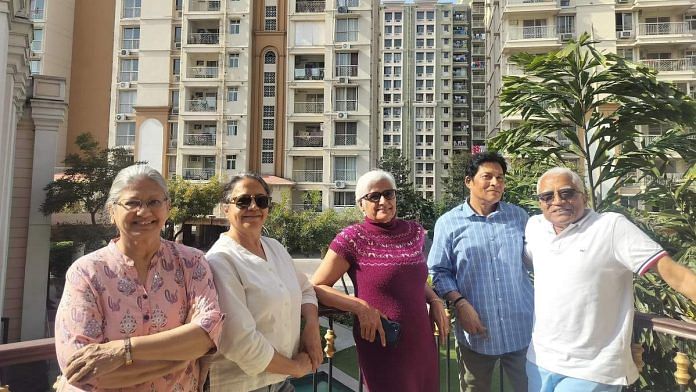


Senior citizens wanting to run away from responsibilities